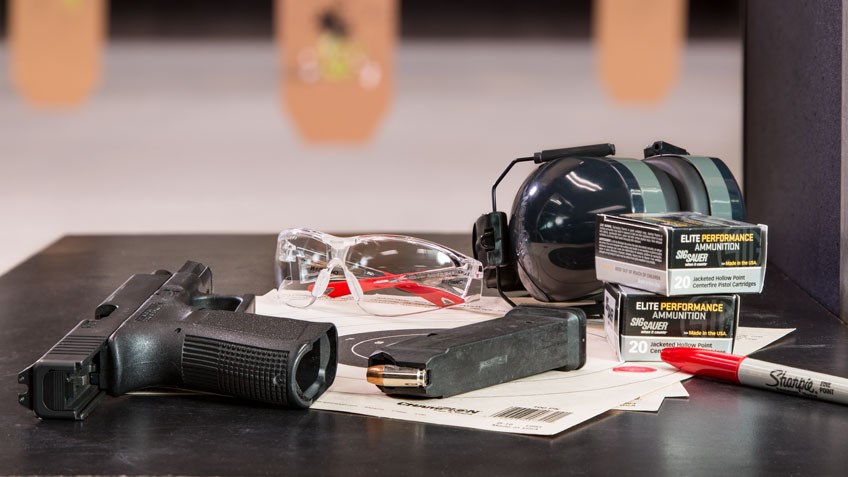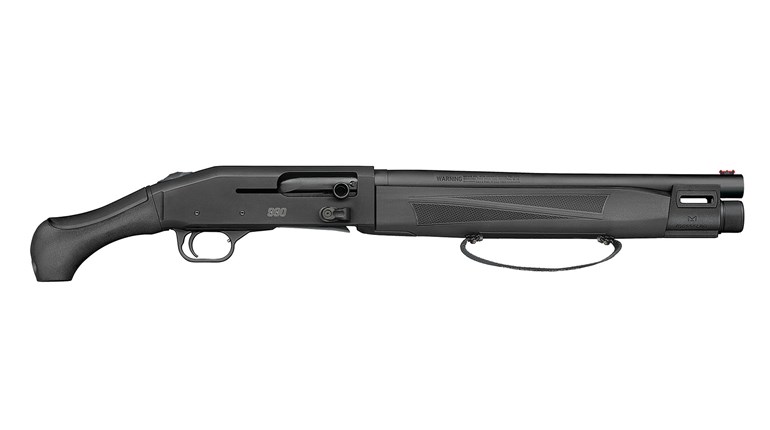
We all want to shoot in a safe, enjoyable atmosphere, whether shooting in a structured class at Gunsite Academy, participating in competitive sports, shooting at a public range or plinking with friends. Adherence to safety rules, courtesy towards other shooters and careful gun handling are all keys to a safe, enjoyable experience so consider my list of things to avoid; I call them the Seven Deadly Range Sins.
1. Ignoring essential safety rules and failing to follow instructions.
Some folks seem to think the rules don’t apply to them and they can be very dangerous to be around. If they can’t be persuaded to amend their behavior, it’s probably best to get away from them. I’m not shy about sending people home from my classes if they are a danger to themselves or others. The way I see it, safety is essential and non-negotiable. Here are the essential rules:
2. Poor Gun Handling
We’ve all seen them. People who wave a gun around or can’t seem to keep their finger off the trigger when they aren't shooting. The usual excuse when brought to their attention is, “But the gun isn’t loaded.” Well, maybe it is and maybe it isn’t, but the rest of us have no way of knowing that. Gun handling and safety rules apply all the time. Always.
3. Speed Holstering
A sure prescription for shooting yourself, speed holstering is an evil habit. Slamming the gun into the holster, especially if the gun isn’t on safe or de-cocked or if your finger is on the trigger can result in a nasty surprise. Should a piece of clothing or part of the holster contact the trigger as the gun is forcefully holstered, it’s quite possible for a round to enter your leg, butt or crotch, depending upon where you carry. Think about that when considering your carry method and always holster slowly, reluctantly and carefully.
4. Turning around with a gun in your hand.
Go to most public ranges, and it won’t take long before you’ll see someone with a gun in their hands turn away from the firing line and sweep other shooters or bystanders. See Rule 2.
5. Bending over with a gun in your hand.
We seem programmed to reflexively bend over and immediately pick up anything we drop. This can be especially dangerous on a range, as we lose control of the muzzle, cover other people, or worse, put our head in line with other people handling firearms. If you drop something, leave it until the line is declared safe.
6. Handling firearms when the range is cold and people are down range or handling firearms behind the firing line.
When the range goes cold, all firearms should be unloaded and benched or holstered. Stepping back to the line to adjust your sights while others are repairing targets is not only dangerous it is downright discourteous. “But the gun isn’t loaded” doesn’t cut it. See Rule 1. The same thing applies to handling guns behind the firing line. Don’t do it.
7. Not using proper eye and ear protection.
How many times have you seen people shooting who aren’t wearing adequate eye and ear protection? While it may take a while to destroy your hearing, you can lose your eyesight in an instant. There’s simply no excuse for not protecting both your eyes and your ears and you shouldn’t allow anyone shooting with you to go unprotected. Same goes for observers and bystanders; just because they aren’t shooting it doesn’t mean they don’t need protection.
So there you have it. My personal list of deadly range sins. There are others but these are the ones I see most often violated. Remember, safety is everyone’s responsibility so take it upon yourself to make sure everyone shooting with you is able to enjoy a safe experience.
1. Ignoring essential safety rules and failing to follow instructions.
Some folks seem to think the rules don’t apply to them and they can be very dangerous to be around. If they can’t be persuaded to amend their behavior, it’s probably best to get away from them. I’m not shy about sending people home from my classes if they are a danger to themselves or others. The way I see it, safety is essential and non-negotiable. Here are the essential rules:
- All guns are always loaded. Always.
- Never let the muzzle cover anything you don’t wish to destroy.
- Keep your finger off the trigger until your sights are on the target (and you intend to shoot).
- Be sure of your target – know what you are shooting at and where the bullet will go if it passes through the target.
2. Poor Gun Handling
We’ve all seen them. People who wave a gun around or can’t seem to keep their finger off the trigger when they aren't shooting. The usual excuse when brought to their attention is, “But the gun isn’t loaded.” Well, maybe it is and maybe it isn’t, but the rest of us have no way of knowing that. Gun handling and safety rules apply all the time. Always.
3. Speed Holstering
A sure prescription for shooting yourself, speed holstering is an evil habit. Slamming the gun into the holster, especially if the gun isn’t on safe or de-cocked or if your finger is on the trigger can result in a nasty surprise. Should a piece of clothing or part of the holster contact the trigger as the gun is forcefully holstered, it’s quite possible for a round to enter your leg, butt or crotch, depending upon where you carry. Think about that when considering your carry method and always holster slowly, reluctantly and carefully.
4. Turning around with a gun in your hand.
Go to most public ranges, and it won’t take long before you’ll see someone with a gun in their hands turn away from the firing line and sweep other shooters or bystanders. See Rule 2.
5. Bending over with a gun in your hand.
We seem programmed to reflexively bend over and immediately pick up anything we drop. This can be especially dangerous on a range, as we lose control of the muzzle, cover other people, or worse, put our head in line with other people handling firearms. If you drop something, leave it until the line is declared safe.
6. Handling firearms when the range is cold and people are down range or handling firearms behind the firing line.
When the range goes cold, all firearms should be unloaded and benched or holstered. Stepping back to the line to adjust your sights while others are repairing targets is not only dangerous it is downright discourteous. “But the gun isn’t loaded” doesn’t cut it. See Rule 1. The same thing applies to handling guns behind the firing line. Don’t do it.
7. Not using proper eye and ear protection.
How many times have you seen people shooting who aren’t wearing adequate eye and ear protection? While it may take a while to destroy your hearing, you can lose your eyesight in an instant. There’s simply no excuse for not protecting both your eyes and your ears and you shouldn’t allow anyone shooting with you to go unprotected. Same goes for observers and bystanders; just because they aren’t shooting it doesn’t mean they don’t need protection.
So there you have it. My personal list of deadly range sins. There are others but these are the ones I see most often violated. Remember, safety is everyone’s responsibility so take it upon yourself to make sure everyone shooting with you is able to enjoy a safe experience.




































